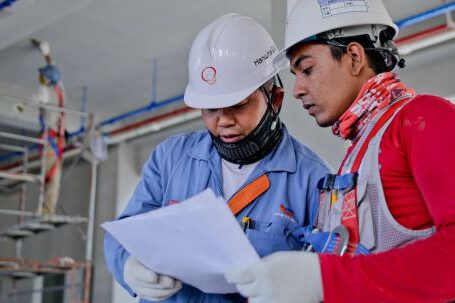The use of safety harnesses is essential for any activity that involves heights, and when it comes to working at such heights, the importance of using safety gear increases even further. In this article, we’ll uncover the best practices for using safety harnesses to ensure the safety of those working at heights, as well as the safety of those who are responsible for the safety of these workers.
What Is a Safety Harness?
A safety harness is a device worn by individuals working at heights, usually attached to an anchor point, that helps to reduce the risk of a fall. It is designed to keep the user secure and is often used in combination with other safety equipment, such as ropes and lanyards, to ensure a safe working environment.
Important Safety Features
Safety harnesses come in a variety of shapes and sizes, but there are several features that are especially important for the safety of the user.
- The harness should fit snugly without being uncomfortable.
- The harness should be adjustable for different sizes of individuals.
- The harness should be equipped with a locking mechanism that prevents it from loosening or coming undone.
- The harness should be made of strong, durable material that can withstand the forces of a fall.
- The harness should be inspected regularly for any signs of damage or wear and tear.
Instructions For Use
When using a safety harness, it’s important to follow the instructions carefully. Below are a few of the key instructions for using a safety harness:
- Always attach the harness to an anchor point that is designed to handle the weight of the user.
- Ensure the straps are securely tightened and not too loose.
- Check that the straps are not twisted or bunched.
- When connecting the harness to an anchor point, check that the connection is secure.
- Never use the harness if it is damaged or if any of the straps are missing or worn.
Maintenance and Care
It’s important to ensure that safety harnesses are properly maintained and cared for in order to ensure their effectiveness.
- Always store the harness in a cool, dry place away from direct sunlight.
- Check the harness for any signs of wear and tear before each use.
- Regularly inspect the harness for any signs of damage or wear and tear.
- Clean the harness with a damp cloth and mild detergent.
- Replace the harness if it becomes too worn or damaged.
Conclusion
Safety harnesses are an essential piece of safety equipment for anyone working at heights. It is important to ensure the harness is properly fitted, worn correctly, and maintained in order to ensure the safety of the user. By following the best practices outlined in this article, workers at heights can ensure that their safety is taken seriously and that they are using the safety harness correctly.






